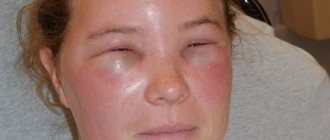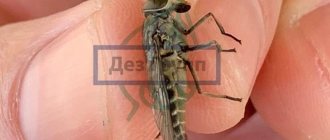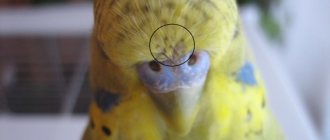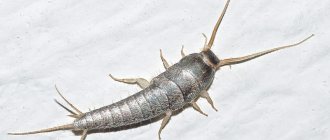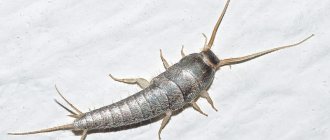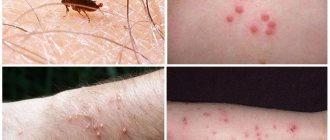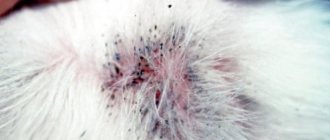Perhaps no other insects evoke such a wide range of emotions as cockroaches do. They are unpleasant from an aesthetic point of view, cause a lot of trouble for apartment owners and are carriers of all kinds of bacteria. But in some cases, the situation gets out of control and a banal feeling of disgust develops into panic attacks.
Blattophobia is the same fear of cockroaches. Since ancient times, this disease has worried people, and today its scale has covered the entire globe. Rapid heartbeat, dizziness and severe weakness are just some of the accompanying symptoms. Along with this, some patients experience paralysis from the resulting stress. Psychotherapists unanimously say: pathology must be eliminated as soon as the first signs appear.
Blatophobia - what is it?
Blattophobia is the fear of cockroaches. Insectophobia is the general name for the fear of insects. There is an opinion that it is more characteristic of women, but in fact, the phobia occurs with equal frequency among both sexes.
On the one hand, a negative attitude towards cockroaches is justified. They carry diseases, spoil things and stain food, create unsanitary conditions, and are a source of allergies. Pests must be controlled for health reasons. But this needs to be done rationally, and not in a fit of panic, burn your own house or poison insects, yourself and your neighbors.
This is interesting! During the reign of Peter I, cockroaches were considered an indicator of the well-being of a home. It never occurred to anyone to fight them. But Peter himself was afraid of cockroach-like insects.
Treatment for fear of cockroaches
The first step will definitely be in the hands of a specialist, who will first check whether the fear of cockroaches is a phobia or whether they are simply not very pleasant. If a disorder does exist, the most common therapeutic range would be as follows.
Exposure therapy
If anxiety levels are very high, it is preferable to first perform creative coping techniques in combination with relaxation training (preferably Jacobson's progressive relaxation) so that you can then deal with the situation directly and directly.
Typically, this technique in the imagination consists of planning out situations that arouse the least to the most anxiety, and then getting used to a certain level of anxiety. When a person no longer feels any anxiety, you need to move on to the next situation.
Reasons for fear of cockroaches
There are several general prerequisites for the development of a phobia:
- childhood psychotrauma, stress (living in a house with cockroaches, a dysfunctional childhood, falling into a pit with insects, punishment or bullying by peers in the form of cockroaches spilling on the head, etc.);
- copying the reaction of adults (not all cockroaches are dangerous, but children do not understand this, but blindly copy the reactions of their parents);
- fear due to children's horror stories or fairy tales (for example, the work “Cockroach” can frighten a young child);
- fear of becoming infected with something from insects (insects carry deadly infections and contaminate food);
- fear that an insect will bite or crawl into the ear or nose;
- suggestibility (the media and horror films tell scary stories about the meeting of a man and a cockroach).
Let's take a closer look at the mechanism of fear formation as such.
Freud's psychodynamic theory
According to Freud's theory, irrational fear is the result of transferring anxiety to a neutral object. Man has used defense mechanisms and suppressed his desires for so long that he has driven them deep into the subconscious. Influencing from there, they cause anxiety, the subject of which the person himself does not understand. Soon he finds an accessible object with which to associate an alarm.
Suppose a child was born into a dysfunctional family. Alcoholism of parents, scandals between parents, violence against a child, poverty, unsanitary conditions and, as a result, cockroaches. The child was afraid of his parents (or one of them), but the subconscious transferred the fear to the cockroaches.
Behaviorist behavioral theory
According to behaviorist theory, fear is the result of learning through a modeling or classically conditioned path.
Conditional path
The classically conditioned path implies that a person, at a moment of discomfort, saw some object and perceived it as the cause of the negative. That is, a person was scared, hurt or disgusted at a specific time in a specific place, and suddenly a cockroach (or its image, a toy, something else) appeared there and the person concentrated his attention on it. In the future, every time a person sees an insect, he will expect the same negative emotions and sensations.
Simulated path
Fear is passed on from parents to children or from films and books. That is, a person sees, hears and imagines how an insect causes harm to another person.
Other methods to get rid of the problem
There are many other ways that can help get rid of a phobia. Among them is yoga. In yoga classes, a person is taught to control the body, sensations, and feelings. Thanks to this, you can learn to control your fear, not allow it to control you, and then not allow it into your life.
Yoga
Non-medicinal methods of treating phobias include walks in nature, where various “spider bugs” live and this is their natural habitat.
Taking tinctures of various medicinal herbs is quite effective:
- Hawthorn.
- Motherwort.
- Peppermint.
- Peony and others.
Many parents are lost and don’t know what to do if a child’s fear of cockroaches begins to manifest itself. Meanwhile, at the initial stage, it is desirable to turn the “terrible monster” into a small, helpless insect that is afraid of everything. This can be done with the help of fairy tales. Of course, you will have to come up with them yourself, or even better, involve the child in inventing the adventures of the little cockroach.
By modeling situations, you can convince your child that the insect is not scary at all, but just ugly. Besides, no one likes cockroaches, which is why they behave so ugly and ill-mannered. Options for developing adventures depend on the child’s phobia.
On a note ! If a child exhibits blattophobia, parents should take care of themselves and not express negative emotions when cockroaches appear.
Manifestations and signs of blattophobia
Cockroach phobia has four characteristic manifestations:
- irrational actions (frequent disinfestation of the house, frequent hand washing, attempts to destroy cockroaches by any means);
- obsessive ideas and thoughts (about killer cockroaches, about contamination of food, about insects entering the human body at night);
- vegetative signs (tachycardia, sweating, breathing problems, dizziness, nausea, trembling);
- panic at the sight of an object of fear (screams, sudden movements of hands, running or jumping, etc.).
Some people fall into a stupor when they see a cockroach, others begin to cry, others try to escape (they may run out of the house). If a person thinks that an insect has crawled into his ear, the blattophobe will run to the hospital or try to get (poison) the insect himself. The latter is very dangerous, because in a state of panic a person can harm himself.
How is insectophobia treated?
The most effective method of combating the fear of insects today is exposure therapy. They include:
- systematic desensitization - relaxing the patient and drawing up a hierarchy of fears. When the object of the phobia is identified, the psychotherapist uses the method of influencing the patient with it. During the course of treatment, the patient climbs the ladder of his fears (from the simplest situations involving the object of fear to a direct meeting with him) - until he defeats his phobia;
- flooding is a more severe method. The patient is exposed to the object of his fear. The doctor may exaggerate its description - the patient experiences such emotional arousal that as a result he realizes the groundlessness of his phobia, because in reality the object of fear turns out to be not so terrible;
- Participatory modeling - the doctor interacts with the patient’s object of phobia, and the patient observes this from the outside. Over time, the patient joins this influence, because he sees that the object of fear is in fact not scary at all.
Are you afraid of insects? Contact a Best Clinic specialist - our psychologists will help you understand the causes of this fear and overcome it!
How to get rid of fear
At an early stage, you can cope with fear on your own. For moderate phobias, it is better to consult a doctor; in severe cases, medication may be needed. But first things first.
Help from a psychologist
For professional treatment, one of the following methods can be chosen:
- Hypnosis. The psychologist puts the client into a trance and reprograms the consciousness, changing the negative attitude to a healthy attitude towards cockroaches. This method is suitable for suggestible people without secondary mental disorders and at a mild stage of phobia.
- Virtual approach to the object of fear. Using a virtual reality helmet, the client is immersed in the world of cockroaches, the psychologist helps to control the condition and reminds them that these are virtual insects. This method can only be used under the supervision of a psychologist, at a mild stage of the disorder. At an advanced stage, such therapy will cause shock, severe fear and a panic attack.
- Cognitive behavioral therapy. The client and psychologist make a list of frightening situations. After this, they are played one by one. For example, first the patient looks at a photo of cockroaches, then a video, then at live insects behind glass, etc. At each stage, the specialist reminds about methods of self-control and new (pre-developed) response models.
- Neurolinguistic programming. During the sessions, the client realizes the irrationality of his perception, and together with the specialist he creates a new picture of reality.
Art therapy and fairy tale therapy are used to treat children. You can come up with a fairy tale yourself. It is important that the cockroach is described there in a positive way. But within the framework of art therapy, you can depict how a child overcomes his fear, defeats an evil cockroach. When working with school-age children, you can study the encyclopedia, get acquainted with the characteristics of individual insects, and approach fear with the help of illustrations. And, of course, parents should control their reactions and not react by screaming at cockroaches.
It is important! The treatment method is selected individually depending on the client’s characteristics and medical history. Sometimes a combination of several psychotherapy methods is used.
Methods for correcting the condition
As an additional treatment for rapid correction of the condition in case of severe anxiety, sleep problems, hallucinations and panic attacks, the psychotherapist prescribes antidepressants, beta blockers, tranquilizers, and psycholeptics.
Getting rid of the fear of cockroaches on your own
As part of self-help, you can use auto-training. First you need to relax your body and brain, take a comfortable position, turn on soothing music or retire in silence and repeat the installation for self-hypnosis: “I conquer my fear”, “I created my fear myself, now I myself let it go”, “I am not afraid of cockroaches” "
It is recommended to consider auto-training as an auxiliary means of self-medication. The main method is a gradual approach to the object of fear. Only by overcoming yourself and looking fear in the eyes can you get rid of a phobia. Conduct auto-training, and then look fear in the eyes. If you feel bad, repeat affirmations and breathe deeply. You can invite a person who does not have blattophobia to visit, and together with him look your fear in the face.
This is interesting! In some countries, certain types of cockroaches are considered a delicacy. Why don't you literally bite the head off your fear?
Alternative medicine for treating insect fear
As a sedative for neurasthenic conditions, tincture of peony, motherwort, and hawthorn is used, 25-35 drops 3 times a day, the course of treatment is a month. For general calming of the nervous system, take fresh motherwort herb juice 30-40 drops 3-4 times a day 30 minutes before meals. For neurasthenic conditions, you can also use the following decoction: pour 1 tablespoon of peppermint leaf into 1.5 cups of hot water, cook for 15 minutes over low heat, take 0.5 cup three times a day.
The main thing is to promptly recognize the presence of a problem, do not delay treatment and visit a specialist who will definitely be able to help you overcome your fears.
What cockroaches scare blattophobes?
People with this phobia are afraid of all cockroaches, but at the same time there are species that inspire them with particular fear.
Firstly, these are red cockroaches, especially loving human homes. They feed on leftover food and multiply very quickly, instilling fear in humans.
Secondly, black cockroaches, which live mainly in basements, so residents of the first floors of apartment buildings suffer from them. These cockroaches differ from the Prussians in their large size, which frightens many people. Thirdly, these are tropical cockroaches - they reach a length of 50–60 cm.
Red Prussians are usually found in kitchens
